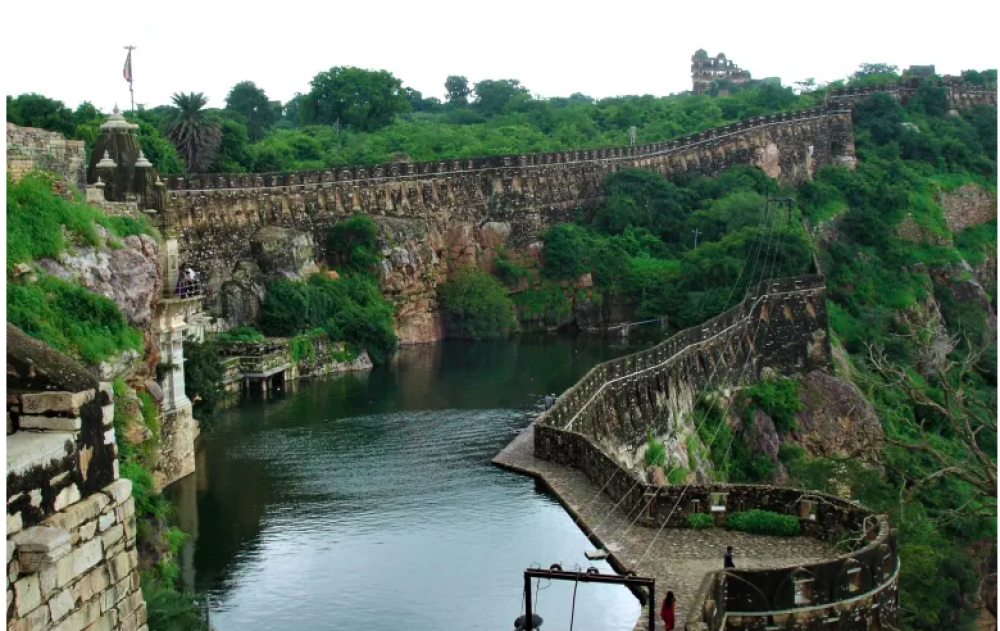

The Gaumukh Reservoir is a significant historical site located within the precincts of the majestic Chittorgarh Fort in Rajasthan, India. Its name translates to 'cow's mouth', which comes from the shape of the spout that feeds water into the reservoir. It holds religious importance due to its association with Hindu beliefs and is considered a sacred spot by devotees.
Chittorgarh Fort, where Gaumukh Reservoir is situated, has been the epitome of Rajput pride, romance, and spirit for people of Chittorgarh and the entire state of Rajasthan. The fort's history is replete with tales of heroism and sacrifice, as it faced sieges from various conquerors like Alauddin Khilji in the 14th century, Bahadur Shah in the 16th century, and finally Akbar in 1567.
Tourism at Gaumukh Reservoir has been intrinsically linked to the tourism of Chittorgarh Fort itself. As the fort gained recognition over the years, so did the popularity of the reservoir. The legacy of the Rajputana bravery, along with the unique architectural features of the reservoir, has attracted history buffs, architects, and travelers to this site for decades.
Visitors have long been drawn to Gaumukh Reservoir due to its serene atmosphere, strategic design, and its historical and religious significance. It is not only a water conservation marvel of its time but also a pilgrimage site due to the belief that it was created by Bhima, one of the Pandavas from the Indian epic 'Mahabharata'.
In recent years, the government and local bodies have taken steps to promote tourism in Rajasthan, with an emphasis on expanding the tourist experience beyond the typical desert safaris and palatial visits. There has been a surge in cultural tourism, eco-tourism, and heritage tourism, which fit well with destinations like the Gaumukh Reservoir.
Eco-friendly Initiatives: To maintain the pristine condition of the environment around the reservoir, efforts are being made towards sustainable tourism. This includes measures to regulate the number of visitors and maintain cleanliness.
Digitization and Storytelling: Embracing modern technology, authorities are increasingly using digital platforms to share the stories and the historical significance of ancient sites, including Gaumukh Reservoir. Virtual tours, informative signage with QR codes, and other interactive experiences are making it easier and more engaging for tourists.
Local Experiences: There's an emerging trend for travelers to immerse themselves in local experiences. Tour operators now offer packages that include visits to the Gaumukh Reservoir along with local cuisine tasting, workshops on traditional Rajasthani crafts, and performances of regional music and dance.
Combining Spirituality with Tourism: As a place of worship, Gaumukh Reservoir draws religious tourists apart from history enthusiasts. Visits are often combined with other spiritual sites within the Chittorgarh Fort complex, providing a holistic cultural-and-spiritual experience.
With its rich history and association with both ancient epics and real-life historical figures, the Gaumukh Reservoir continues to be a key attraction for visitors in Chittorgarh. The evolution of tourism trends and conservation efforts promise a sustainable and enriching experience for future generations of travelers.